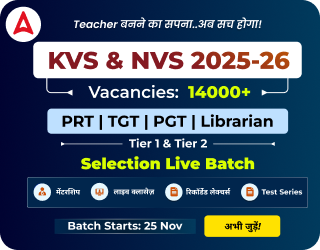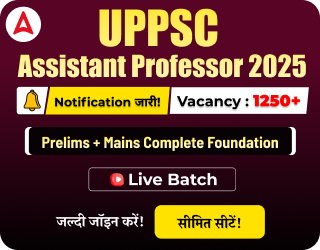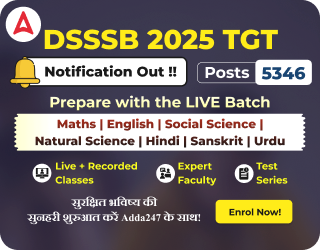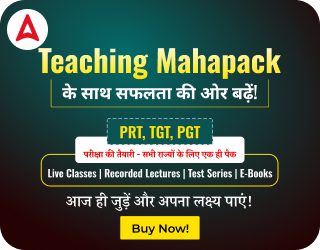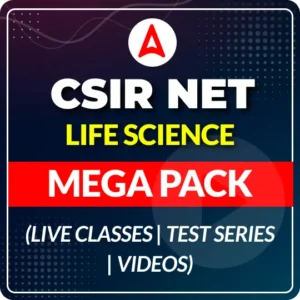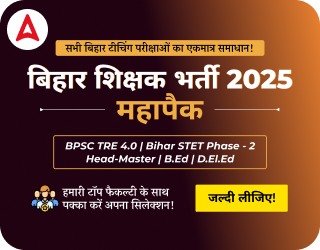Table of Contents
The KVS Recruitment 2025 has been released by CBSE for the 9,126 teaching and non-teaching posts. The Ministry of Education has decided to conduct the Common Recruitment Exam for KVS, for which CBSE will be the conducting body. The Recruitment Exam will be conducted online for the 9,126 vacancies for the Kendriya Vidyalaya Sangathan (KVS) and 5,841 vacancies for the Navodaya Vidyalaya Samiti. CBSE has extended the KVS Apply Link 2025 on the official website. Candidate can apply till 11 December 2025 through provided link below.
KVS Recruitment 2025, Eligibility Revised
The Kendriya Vidyalaya Sangathan has officially updated the KVS Eligibility Criteria 2025 for teaching and non-teaching posts, following approval from the Ministry of Education. Candidates planning to appear for the KVS Recruitment 2025 must review the revised norms carefully, as several posts now include new age limits, integrated degree pathways, and additional administrative roles.
| Aspect | Previous KVS (May 2025) | CBSE Latest Notice | Change / Impact |
|---|---|---|---|
| Principal | Min age 35; 12 yrs PGT / 3 yrs Vice Principal | Age 35–50; multiple detailed experience pathways | Added upper age limit; clearer experience rules |
| PGT | Master’s / Integrated PG + B.Ed., 50%, age 40 | Same, but explicitly permits 4-year integrated PG-B.Ed. | More flexibility in degree options |
| TGT | 4-year integrated / Bachelor + B.Ed.; CTET Paper-II | Adds Post-Graduation ≥55% as alternate; integrated degree clarified | Slightly stricter yet more inclusive |
| TGT (PE) | B.P.Ed. or equivalent; age 35 | Adds 4-year integrated PE course, SAI recognition, diploma, school experience | Expanded eligibility & desirable criteria |
| Assistant Commissioner | Not applicable | Age ≤50; Master’s + B.Ed./Integrated B.Ed.-M.Ed.; 3 yrs Principal; computer skills; Hindi/English | New senior administrative role introduced |
| Junior Assistant | Not applicable | Age ≤27; Class XII; typing skills | New entry-level administrative post |
| PRT | No change | No change | – |
KVS Recruitment 2025 OUT
The official notification for the KVS Recruitment 2025 is now available for download on the official website. Candidates will find all the details for all 9,126 teaching and non-teaching KVS posts in the notification PDF. The notification includes detailed information on post-wise vacancies, eligibility criteria, selection process, salary structure, and important instructions. Candidates are advised to read the official notification carefully before applying to ensure they meet all the required qualifications.
KVS Last Date Extended to Apply 2025
The KVS Form Last Date for the 2025 recruitment has been extended till December 11, 2025, and all candidates should submit their applications before this deadline to avoid last-minute problems. Aspirants must complete the registration process, upload the required documents, and pay the application fee on time. Keeping an eye on official KVS updates will help you stay informed about any changes. Applying before the KVS Last Date to Apply 2025 ensures a smooth process and gives you enough time to prepare for the upcoming selection stages.
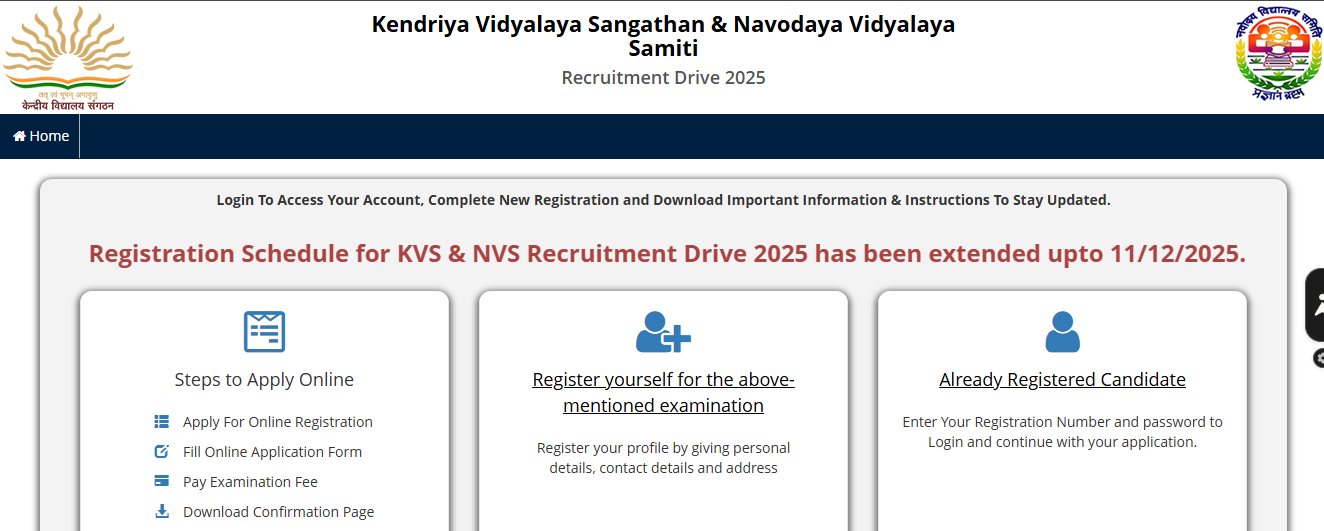
KVS Exam Date 2025 Out
The KVS Exam Date 2025 has been officially announced. The KVS written exams for Tier I will be held on 10-11 January 2026 in CBT mode. The Admit cards are likely to be released in December 2025, so candidates should keep an eye on updates and follow this article for timely information. Staying alert and planning your preparation now will help you stay ahead of the competition.
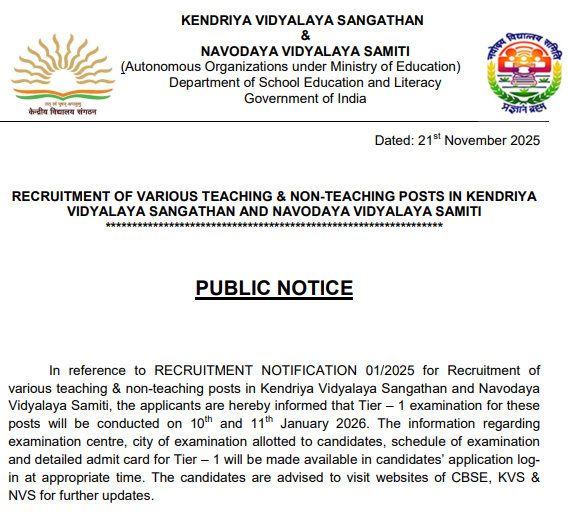
KVS Notification 2025 OUT: Highlights
The KVS Vacancy 2025 Notification is now out, and the online application window till 11 December 2025. The recruitment process will follow a national-level CBT for Prelims and Mains, along with an interview and document verification. These vacancies are available for posts such as Principal, Vice-Principal, PGTs (Postgraduate Teachers), TGTs (Trained Graduate Teachers), PRTs (Primary Teachers), Librarian, and other non-teaching roles. This is a major opportunity for aspirants aiming to secure central government teaching jobs across India.
| KVS Vacancy 2025 Notification | |
| Name of Recruitment | KVS Teacher Recruitment 2025 |
| Conducting Body | Kendriya Vidyalaya Sangathan (KVS) |
| Vacancy | 9126 Vacancies |
| Notification Release Date | 13 November 2025 |
| Application Dates | 11 December 2025 (Last Date Extended) |
| Exam Date | 10-11 January 2026 |
| Level of Exam | National Level Exam |
| Mode of Application | Online |
| Mode of Exam | OMR |
| Selection Process | Written Exam- Prelims, Mains + Interview + Document Verification |
| Age Limit | PRT- 30 yrs, TGT- 35 yrs, PGT- 40 yrs |
| Official Notification PDF | |
| Exam date | Check Here |
| Official Website | www.cbse.gov.in, www.kvsangathan.nic.in, and www.navodaya.gov.in |
KVS Exam Important Dates 2025
The official Notification for KVS Recruitment 2025 has been released for Teaching and non-teaching posts. The Registration Schedule for the KVS Examination has been provided below. The candidate must read the table below before applying for the KVS Application Form 2025.
| Event | Date |
|---|---|
| KVS Recruitment Notification 2025 | November 13, 2025 |
| Registration Date | November 14, 2025 |
| Last Date for KVS Registration | December 11, 2025 (Last Date Extended) |
| KVS Exam Date 2025 | 10-11 January 2026 |
| KVS Admit Card | To be released soon |
| KVS Answer Key | To be released soon |
| KVS 2025 Result | To be released soon |
| KVS Cut Off | To be released soon |
KVS Vacancy 2025 OUT
The Kendriya Vidyalaya Sangathan (KVS) has officially released the KVS Vacancy 2025 Notification details under Recruitment Notification No. 01/2025. This year, a total of 9,126 new vacancies have been announced for Teaching and Non-Teaching posts across various Kendriya Vidyalayas in India. Candidates aspiring to work in central government schools can check the post-wise distribution below:
| KVS Teacher Vacancy 2025 | |
| Post Name | Number of Posts |
| PGT | 1465 |
| TGT | 2794 |
| PRT | 3365 |
| Assistant Commissioner | 8 |
| Principal | 134 |
| Vice Principal | 58 |
| Head Librarian | 147 |
| Non-Teaching post | 1155 |
| Grand Total | 9126 (New) |
Note: According to the Ministry of Education’s notice, the Common Recruitment Exam for KVS teaching and non-teaching posts is conducted by CBSE. Along with 9,126 vacancies for Kendriya Vidyalaya Sangathan (KVS), CBSE has also announced 5,841 vacancies for Navodaya Vidyalaya Samiti.
KVS PGT Vacancy 2025 OUT
The KVS PGT Vacancy 2025 notification brings a total of 1465 vacancies across various Post Graduate Teacher (PGT) subjects. Candidates aspiring to teach in Kendriya Vidyalayas at the senior secondary level are eligible to apply for these posts.
| KVS PGT Vacancy 2025 | ||||||||||
| Subject | UR | EWS | OBC NCL | SC | ST | Total | LD | VI | HI | Others |
| Hindi | 52 | 12 | 33 | 18 | 9 | 124 | 1 | 3 | 3 | 3 |
| English | 68 | 16 | 44 | 24 | 12 | 164 | 2 | 2 | 3 | 4 |
| Physics | 89 | 21 | 57 | 31 | 15 | 213 | 6 | 7 | 4 | 8 |
| Chemistry | 84 | 20 | 55 | 30 | 15 | 204 | 6 | 7 | 3 | 7 |
| Mathematics | 33 | 8 | 21 | 12 | 6 | 80 | 1 | 4 | 3 | 3 |
| Biology | 53 | 12 | 34 | 19 | 9 | 127 | 4 | 4 | 4 | 4 |
| History | 32 | 7 | 20 | 11 | 5 | 75 | 1 | 1 | 2 | 1 |
| Geography | 32 | 7 | 19 | 10 | 5 | 73 | 1 | 1 | 2 | 0 |
| Economics | 55 | 12 | 34 | 19 | 9 | 129 | 1 | 2 | 3 | 4 |
| Commerce | 41 | 9 | 25 | 14 | 7 | 96 | 1 | 3 | 2 | 2 |
| Computer Science | 73 | 17 | 47 | 26 | 13 | 176 | 5 | 6 | 3 | 6 |
| Bio-Technology | 3 | 0 | 1 | 0 | 0 | 4 | 0 | 1 | 0 | 0 |
| Total PGTs | 615 | 141 | 390 | 214 | 105 | 1465 | 29 | 41 | 32 | 42 |
KVS TGT Vacancy 2025 Out
The KVS TGT Vacancy 2025 notification announces 2794 openings for Trained Graduate Teacher (TGT) positions across Kendriya Vidyalayas. This recruitment drive offers a valuable opportunity for graduate candidates with a B.Ed. Teachers who wish to teach students in Classes VI to X.
| KVS TGT Vacancy 2025 | ||||||||||
| Subject | UR | EWS | OBC NCL | SC | ST | Total | LD | VI | HI | Others |
| Hindi | 8 | 1 | 3 | 1 | 0 | 13 | 0 | 1 | 4 | 8 |
| English | 129 | 31 | 84 | 47 | 23 | 314 | 3 | 4 | 7 | 16 |
| Sanskrit | 217 | 52 | 142 | 79 | 39 | 529 | 5 | 8 | 9 | 15 |
| Social Studies | 134 | 32 | 88 | 49 | 24 | 327 | 3 | 4 | 8 | 17 |
| Mathematics | 170 | 41 | 111 | 61 | 30 | 413 | 4 | 18 | 8 | 16 |
| Science | 74 | 17 | 47 | 26 | 13 | 177 | 11 | 11 | 5 | 11 |
| Physical Health Edn. | 61 | 14 | 38 | 21 | 10 | 144 | 7 | 9 | 7 | 7 |
| Art Education | 55 | 13 | 36 | 20 | 10 | 134 | 1 | 6 | 2 | 1 |
| Work Experience | 103 | 25 | 67 | 37 | 18 | 250 | 2 | 3 | 4 | 7 |
| Special Educator TGT | 202 | 49 | 133 | 73 | 36 | 493 | 5 | 5 | 5 | 5 |
| Total TGTs | 1153 | 275 | 749 | 414 | 203 | 2794 | 41 | 69 | 59 | 103 |
KVS PRT Vacancy 2025
| KVS PRT Vacancy 2025 | ||||||||||
| Post | UR | EWS | OBC NCL | SC | ST | Total | LD | VI | HI | Others |
| Special Educator PRT | 202 | 49 | 133 | 74 | 36 | 494 | 5 | 5 | 5 | 5 |
| PRT (General) | 1089 | 268 | 724 | 402 | 201 | 2684 | 27 | 27 | 92 | 131 |
| PRT Music | 78 | 18 | 49 | 29 | 13 | 187 | 3 | 3 | 0 | 8 |
| Total PRTs | 1369 | 335 | 906 | 505 | 250 | 3365 | 35 | 35 | 97 | 144 |
KVS Assistant Commissioner Vacancy 2025
| Post | UR | EWS | OBC (NCL) | SC | ST | Total | LD | VI | HI | Others |
|---|---|---|---|---|---|---|---|---|---|---|
| Assistant Commissioner | 05 | 0 | 02 | 01 | 0 | 08 | 01* | 0 | 0 | 01* |
KVS Principal & Vice Principal Vacancy
| Post | Vacancies | UR | EWS | OBC | SC | ST |
| Principal | 134 | 68 | 0 | 36 | 20 | 10 |
| Vice-Principal | 58 | 31 | 0 | 15 | 8 | 4 |
KVS Librarian Vacancy 2025
| Post | UR | EWS | OBC NCL | SC | ST | Total | LD | VI | HI | Others |
| Librarian | 61 | 14 | 39 | 22 | 11 | 147 | 2 | 0 | 3 | 8 |
KVS Non Teaching Vacancy 2025
| Post Name | Vacancies |
|---|---|
| Assistant Commissioner [Equivalent to Group-A] | 08 |
| Administrative Officer | 12 |
| Finance Officer | 05 |
| Assistant Engineer | 02 |
| Assistant Section Officer | 74 |
| Junior Translator | 08 |
| Jr. Secretariat Assistant | 714 |
| Sr. Secretariat Assistant | 280 |
| Stenographer Grade 1 | 03 |
| Stenographer Grade 2 | 57 |
| Total | 1155 |
KVS Eligibility Criteria 2025
Before applying for the KVS Teacher Recruitment 2025, candidates must ensure they meet the specific eligibility requirements for the post they are interested in, including age limit, educational qualifications, experience, and more. The details are as follows:
Education Qualifications
| Post Name | Education Qualification |
| Principal | i) Master’s Degree with at least 50% marks from a recognized institution/University. ii) Bachelor’s degree in Education (B.Ed.) with at least 50% marks from an NCTE-recognized institution/University. OR Three-year integrated B.Ed.-M.Ed. from NCTE-recognized institution/University with at least 50% marks OR Four-year Integrated Degree with at least 50% marks, including B.Ed. component from NCTE recognized Institution/University (50% marks) iii) Working as Principal in Pay Level-12 (Rs. 78800-209200) in the Pay Matrix in Central/State Govt./Autonomous organizations of Central/State Govt. OR Working as Vice-Principal for 3 years in Pay Level-10 (Rs. 56100-177500) in Central/State Govt. /Autonomous organizations of Central/State Govt. |
| Vice Principal | i) Master’s Degree from a recognized university with at least 50% marks in aggregate. ii) Bachelor’s Degree in Education (B.Ed.) with at least 50% marks from a NCTE-recognized institute/University OR Three-year integrated B.Ed.-M.Ed. with at least 50% marks from any NCTE-recognized Institute/University OR Four-year Integrated degree with at least 50% marks from an NCTE-recognized institution/ University, including B.Ed. component (50% marks). iii) Working as Vice Principal in Central/ State Govt./Autonomous organizations of Central/ State Govt. in the Pay Level 10 (Rs. 56100 to Rs. 177500) OR Working as a PGT or Lecturer in the Central/ State Govt./ Autonomous organizations of Central/ State Govt. in the Pay Level 8 ( Rs. 47600 to Rs. 151100) for at least 06 years iv. Knowledge of Computer Applications. v. Working knowledge of Hindi and English. |
| PGT (All Subjects) | (a) Integrated Post Graduate Course from an NCTE-recognized institution/University, in the concerned subject, with at least 50% marks in aggregate, including B.Ed. component. OR Master’s Degree from a recognized institution/University with at least 50% marks in aggregate in the concerned subject AND (b) B.Ed. Degree from an NCTE-recognized institution/University with at least 50% marks OR Three years Integrated B.Ed.-M.Ed. from NCTE-recognized Institution/University with at least 50% marks OR Four-year Integrated Degree with at least 50% marks from an NCTE-recognized institution/ University, including B.Ed. component (c) Proficiency to teach in Hindi and English medium. |
| TGT (All Subjects) | Four-year integrated degree course from an NCTE-recognized Institution/ University with at least 50% marks in the concerned subject(s) as well as in the aggregate, including B.Ed. component. OR Bachelor/Honours Degree from a recognized institution/University with at least 50% marks in the concerned subject, a combination of subjects, as well as in the aggregate. ii. B.Ed. Degree from an NCTE-recognized institution/University with at least 50% marks OR Three years Integrated B.Ed.-M.Ed. from NCTE recognised Institution/University with at least 50% marks OR **Graduation in the concerned subject with at least 50% marks and 1-year B.Ed. (Special Education) from the Rehabilitation Council of India (RCI) with at least 50% marks OR Post-Graduation in the concerned subject / any specialization in the concerned subject with a minimum 55% marks or equivalent grade, provided that the candidate has studied the subject(s) mentioned in the note below at the graduation level and three years integrated B.Ed.-M.Ed. from a NCTE-recognized institution/University with at least 50% marks. |
| PRT (All Subjects) | Senior Secondary (or its equivalent) with at least 50% marks and a 2-year Diploma in Elementary Education(by whatever name known) OR Senior Secondary(or its equivalent) with at least 50% marks and a 4-year Bachelor of Elementary Education (B.EI.Ed.) OR Senior Secondary(or its equivalent) with at least 50% marks and 2-year Diploma in Education(Special Education) OR Graduation with at least 50% marks and a Bachelor of Education |
| Librarian | Bachelor’s degree in Library Science, OR a Graduate with a one-year diploma in Library Science from a recognized institution |
| Assistant Section Officer | Graduate with 3 years’ experience as UDC in Central/State Govt./Autonomous Bodies/Public Sector Undertakings. Desirable: |
| Finance Officer | B.Com with 50% marks in the aggregate and at least 4 years post-qualification experience in the Audit and Accounts work. OR M.Com with 50% marks and at least 3 years post-qualification experience in Audit and Accounts work OR CA (Inter) or ICWA (Inter) or MBA (Finance) or PGDM (Finance) (2 years full-time or 3 years part-time) with 2 years post-qualification experience in the Audit and Accounts work. |
| Assistant Commissioner | i. Master’s Degree from a recognized university with at least 50% marks ii. B.Ed. from NCTE Recognized Institute/University with at least 50% marks OR Three-year integrated B.Ed.-M.Ed. from NCTE Recognized Institute/University with at least 50% marks iii. Working as Principal in the Pay Level 12 (Rs. 78800 to Rs. 209200) for at least 03 years in Central/State/Autonomous Organizations of Central Govt./State Govt. iv. Knowledge of computer applications. v. Working knowledge of Hindi and English. |
| Assistant Engineer (Civil) |
Graduated in Civil Engineering from a recognized University 2 years’ experience in design and engineering in the concerned branch OR 3 years Diploma in Civil Engineering from a recognized Institute and 5 years’ experience in the concerned branch. |
| Stenographer Grade II | 12th pass or equivalent from a recognized Board or University. |
| Senior Secretariat Assistant | Graduate with three years’ experience as LDC in Central Govt./ Govt./Autonomous Bodies/Public Sector Undertakings |
| Junior Secretariat Assistant | Class XII pass or equivalent qualification from a recognized board or university. A typing speed of 35 w.p.m. in English or 30 w.p.m. in Hindi on a computer. Working knowledge of Hindi. Knowledge of Computer Applications |
KVS Age Limit (Post-wise)
Candidates applying for the Notification must ensure they meet the post-wise age limit criteria for the recruitment process. In the following table, candidates will find detailed information on the KVS Age Limit 2025 Criteria Post-wise.
| KVS Recruitment Age Limit Criteria 2025 | |
| Posts | Age Limit |
| Principal | 35 to 50 years |
| Vice Principal | 35 to 45 years |
| PGT (All Subjects) | 40 years (maximum) |
| TGT (All Subjects) | 35 years (maximum) |
| PRT (All Subjects) | 30 Years (maximum) |
| Librarian | 35 Years (maximum) |
| Assistant Section Officer | 35 years |
| Finance Officer | 35 years (maximum) |
| Assistant Commissioner | 50 years (maximum) |
| Assistant Engineer (Civil) | 35 years (maximum) |
| Stenographer Grade II | 27 years (maximum) |
| Senior Secretariat Assistant | 30 years (maximum) |
| Junior Secretariat Assistant | 27 years (maximum) |
KVS Apply Online Link 2025
The online application portal for KVS Recruitment 2025 will open till 11 December 2025 (Last Date Extended). Interested candidates can submit their applications through the official websites. Candidates are advised to keep all necessary documents ready before filling out the KVS Application Form 2025 to ensure a smooth application process. Make sure to apply within the given timeline to avoid any last-minute issues.
How to Apply for KVS Teacher Recruitment 2025?
The candidates must go through the following instructions to apply for the KVS Vacancy 2025. The Online application form has been available on the official portal of KVS, and candidates must ensure that they fill out and submit the KVS Application Form 2025. Applications received in any other mode will be rejected by the competent authorities.
- Visit the KVS official website and click “Apply Online”.
- Register with a valid email ID & mobile number to get login credentials.
- Fill in personal, educational, and experience details.
- Upload required documents (photo, signature, certificates).
- Pay the application fee online and submit the form.
- Download & print the application form for future reference.
KVS Application Fee for TGT, PGT, and PRT
Candidates applying for the KVS Recruitment 2025 must pay the prescribed examination and processing fees online through the official application portal.
| Post | Application Fee (Rs.) (General/OBC/EWS) | Application Fee (Rs.) (SC/ST/PwBD/ESM) |
|---|---|---|
| Assistant Commissioner | 2800 | 500 |
| Principal | 2800 | 500 |
| Vice Principal | 2800 | 500 |
| Post Graduate Teachers (PGT) | 2000 | 500 |
| Trained Graduate Teachers (TGT) | 2000 | 500 |
| Primary Teachers (PRT) | 2000 | 500 |
| Librarian | 2000 | 500 |
| Non-Teaching Posts | 2000 | 500 |
Documents Required to Apply for KVS
To successfully apply for KVS Recruitment 2025, candidates must keep important documents like educational certificates, ID proof, photographs, and category certificates ready. Having these documents in the correct format ensures a smooth and error-free online application process.
| Document Type | Details / Notes |
|---|---|
| Class 10th Mark Sheet | Proof of date of birth and basic qualification |
| Class 12th Mark Sheet | Required for eligibility verification |
| Graduation Certificate | For posts like PRT, TGT, and other teaching roles |
| Post-Graduation Certificate | Needed for PGT and higher-level posts |
| Professional Qualification Certificates | B.Ed, D.El.Ed, CTET, or other required teaching qualifications |
| Valid Photo ID Proof | Aadhaar Card / PAN Card / Passport / Voter ID |
| Passport-Size Photograph | Recent, clear, and as per KVS guidelines |
| Scanned Signature | As per the size and format required in the application |
| Category/Caste Certificate (if applicable) | SC/ST/OBC/EWS certificate issued by a competent authority |
| Disability Certificate (if applicable) | Required for candidates applying under the PwD category |
KVS Teacher Selection Process 2025
The Kendriya Vidyalaya Sangathan (KVS) Selection Process 2025 is a multi-stage recruitment procedure designed to select qualified candidates for various teaching and non-teaching posts. The process consists of two written examinations (Tier-1 and Tier-2) followed by an interview for specific posts. The final selection will be made based on the candidate’s overall performance in the written tests and interview.
| Posts | Selection Process | Final Selection |
| Principal |
|
|
| Vice Principal |
|
|
| PGT |
|
|
| TGT |
|
|
| PRT |
|
|
| Librarian |
|
|
| Assistant Section Officer |
|
|
| Finance Officer |
|
|
| Assistant Commissioner |
|
|
| Assistant Engineer (Civil) |
|
|
| Stenographer Grade II |
|
|
| Senior Secretariat Assistant |
|
|
| Junior Secretariat Assistant |
|
|
KVS Exam Pattern 2025 Revised
The Kendriya Vidyalaya Sangathan (KVS) Exam Pattern 2025 comprises two stages i.e. Tier-1 and Tier-2 examinations, followed by an interview for specific posts. Tier-1 will serve as a preliminary screening test, while Tier-2 will evaluate the subject knowledge of candidates. The detailed structure of both tiers is as follows:
KVS Tier-1 Exam Pattern 2025
Tier-1 will be a Preliminary (Qualifying) Examination conducted in OMR (Objective) mode. The total duration of the test will be 2 hours, and it will consist of 100 questions carrying 300 marks.
| Test Component | No. of Questions | Total Marks |
|---|---|---|
| Part I – General Reasoning | 20 | 60 |
| Part II – Numeric Ability | 20 | 60 |
| Part III – Basic Computer Literacy | 20 | 60 |
| Part IV – General Knowledge | 20 | 60 |
| Part V – Language Competency (English) | 10 | 30 |
| Part VI – Language Competency (Modern Indian Language*) | 10 | 30 |
| Total | 100 | 300 |
Note: Candidates can select one language from Hindi, Assamese, Bengali, Gujarati, Kannada, Malayalam, Marathi, Odia, Punjabi, Tamil, Telugu, or Urdu. Once selected, the medium of examination cannot be changed later.
KVS Tier-2 Exam Pattern 2025
Tier-2 will be a Subject Knowledge Examination comprising both Objective and Descriptive components. The duration of this test will be 2 hours and 30 minutes, carrying a total of 100 marks.
| Component of Test | Type | No. of Questions | Total Marks |
|---|---|---|---|
| Subject Knowledge | Objective | 60 | 60 |
| Subject Knowledge | Descriptive | 10 | 40 |
| Total | — | 70 | 100 |
KVS Exam Skill Test
| Post | Test | Details |
|---|---|---|
| Junior Secretariat Assistant | Typing Test | English: 35 w.p.m. or Hindi: 30 w.p.m. (Qualifying) |
| Computer Proficiency Test (CPT) | MS Word, Excel, Access, PowerPoint, Internet (40% passing) | |
| Stenographer Grade I & II | Shorthand Test | Dictation: 10 mins @ 80 w.p.m., Transcription (50 mins in English / 65 mins in Hindi) |
| Typing Test | English: 40 w.p.m. or Hindi: 35 w.p.m. (Qualifying) | |
| Computer Proficiency Test (CPT) | MS Word, Excel, Access, PowerPoint, Internet (40% passing) |
KVS Marking Scheme 2025
The KVS Marking Scheme 2025 has been designed to ensure fair evaluation in both Tier-1 and Tier-2 examinations. Candidates must carefully understand the marking pattern, as both tiers include negative marking for incorrect answers. The scheme focuses on accuracy and subject knowledge, rewarding precision and penalizing guesswork.
KVS Tier-1 Marking Scheme (Screening Test)
Tier-1 will serve as a screening test to shortlist candidates for Tier-2 in a 1:10 ratio (relative to the notified vacancies). Each question carries 3 marks, and there is a negative marking of 1 mark for every wrong answer. No marks will be awarded for unattempted questions.
| Particulars | Details |
|---|---|
| Total Questions | 100 |
| Marks per Question | 3 |
| Total Marks | 300 |
| Negative Marking | 1 mark for each wrong answer |
| Unanswered Questions | No marks awarded |
| Nature of Exam | Qualifying (Screening) |
KVS Tier-2 Marking Scheme (Subject Knowledge Test)
Tier-2 will evaluate candidates’ in-depth knowledge of their subject area through objective and descriptive components. The total marks for Tier-2 are 100, and a negative marking of 0.25 marks applies to every wrong answer in the objective section.
| Particulars | Details |
|---|---|
| Objective Questions | 60 |
| Descriptive Questions | 10 |
| Total Marks | 100 (60 + 40) |
| Marks per Objective Question | 1 mark |
| Negative Marking (Objective Section) | 0.25 marks for each wrong answer |
| Descriptive Questions | No negative marking |
KVS Teacher Syllabus 2025
The KVS Syllabus 2025 has been thoughtfully structured to align with the specific requirements of each post, ensuring a comprehensive evaluation of every candidate. It covers fundamental areas such as General English, General Hindi, Reasoning Ability, General Knowledge & Current Affairs, Computer Literacy, and Pedagogy. Additionally, for teaching roles like PGT, TGT, and PRT, the syllabus includes subject-specific sections that assess candidates based on their chosen teaching disciplines.
| KVS Syllabus 2025 | |
| Subjects | Topics |
| General English |
|
| General Hindi |
|
| KVS Post Wise Syllabus Link | |
| KVS PRT Syllabus 2025 | KVS TGT Syllabus 2025 |
| KVS Principal Syllabus 2025 | KVS PGT Syllabus 2025 |
KVS Previous Year Question Paper
KVS Previous Year Question Papers are important papers for aspirants to pass the KVS Teacher Recruitment 2025. These papers provide you with a proper understanding of the exam pattern, commonly asked questions, difficulty level, and high-weightage topics. Regular practice with these question papers not only sharpens time management and accuracy but also enhances problem-solving skills. You can download the past years’ question papers directly from the link we mentioned here.
KVS Teacher Salary Structure
The KVS Salary 2025 offers an attractive and competitive pay structure for teaching positions. In addition to the basic salary, KVS teachers are entitled to various government-approved allowances, including Dearness Allowance (DA), House Rent Allowance (HRA), and other perks and benefits, making it an advantageous career choice.
| Post Name | Salary |
| Principal | 78,800/- to 2,09,200/- |
| Vice Principal | 56,100/- to 1,77,500/- |
| Post Graduate Teachers (PGTs) | 47,600/- to 1,51,100/- |
| Trained Graduate Teachers (TGTs) | 44,900/- to 1,42,400/- |
| Librarian | 44,900/- to 1,42,400/- |
| Assistant (Group-B) | 44,900/- to 1,42,400/- |
| Primary Teacher / Primary Teacher (MUSIC) | 35,400/- to 1,12,400/- |
KVS Cut Off Marks 2025
| KVS Cut Off Previous Year | ||||
| Post | UR | OBC | SC | ST |
| TGT English | 58.05 | 52.15 | 48.13 | 46.25 |
| TGT Hindi | 55.90 | 52.93 | 50.27 | 48.50 |
| TGT Sanskrit | 54.73 | 49.67 | 47.28 | 44.33 |
| TGT Maths | 61.73 | 57.87 | 55.27 | 50.50 |
| TGT Science | 60.87 | 52.17 | 52.27 | 48.07 |
| TGT Social Studies | 58.10 | 52.33 | 48.90 | 46.70 |
| PRT | 68.60 | 63.47 | 61.83 | 54.33 |
KVS Zone Wise Posting 2025
Below we mentioned the list of Zone-wise Posting Area:
| S. No. | Zone Name | State Name |
| 1 | Central Zone | 1. Uttar Pradesh 2. Madhya Pradesh 3. Chhattisgarh |
| 2 | North Zone | 1. Chandigarh 2. Delhi 3. Haryana 4. Himachal Pradesh 5. Jammu and Kashmir 6. Punjab 7. Uttarakhand |
| 3 | East Zone | 1. West Bengal 2. Bihar 3. Jharkhand 4. Odisha 5. Sikkim |
| 4 | West Zone | 1. Rajasthan 2. Maharashtra 3. Goa 4. Gujarat 5. Daman and Diu 6. Dadra Nagar and Haveli |
| 5 | South Zone | 1. Karnataka 2. Tamil Nadu 3. Andhra Pradesh 4. Kerala 5. Telangana 6. Lakshadweep 7. Andaman and Nicobar Islands |
| 6 | North-Eastern Zone | 1. Assam 2. Meghalaya 3. Manipur 4. Mizoram 5. Arunachal Pradesh 6. Tripura 7. Nagaland |




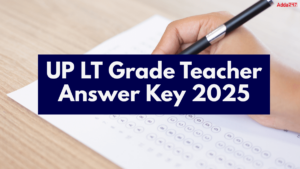 UP LT Grade Teacher Unofficial Answer Ke...
UP LT Grade Teacher Unofficial Answer Ke...
 UP LT Grade Teacher Question Paper 2025 ...
UP LT Grade Teacher Question Paper 2025 ...
 Bihar BFUSC Faculty Recruitment 2025-26:...
Bihar BFUSC Faculty Recruitment 2025-26:...
